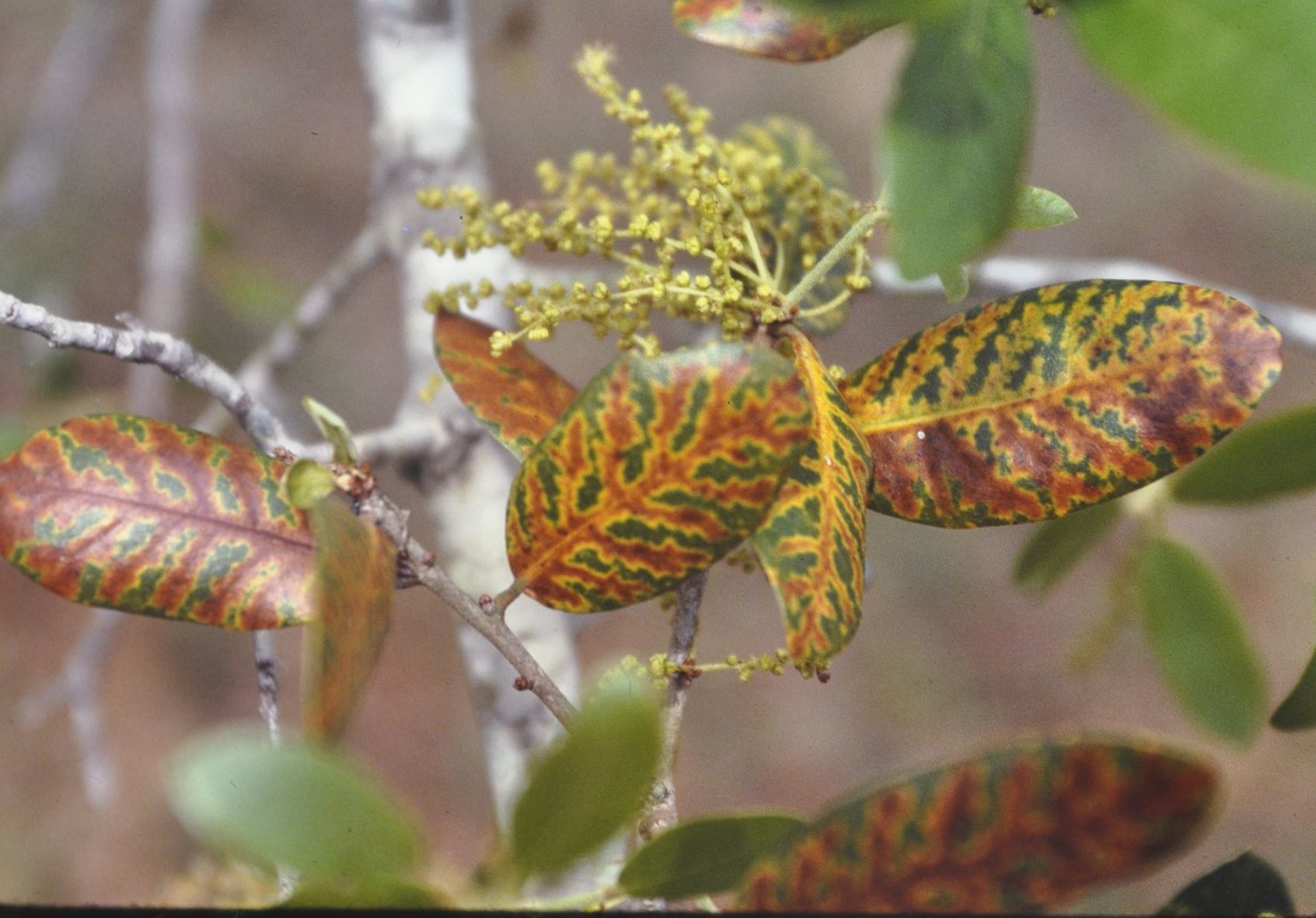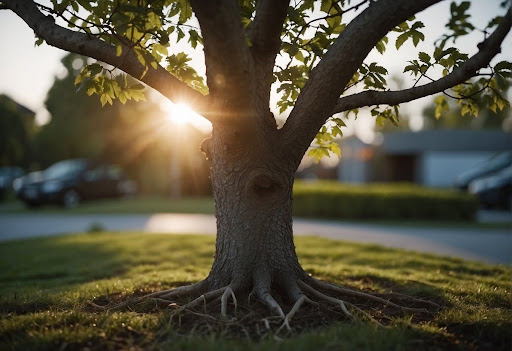
Eight Step Program to Oak Wilt Management
Date May 27, 2021
Category
Oak Wilt is one of the deadliest diseases for our Oak trees of Texas. Tree health care professionals in Dallas-Fort Worth like TreeNewal work hard every year during Oak Wilt season to keep our local trees and urban forests disease-free. The Texas A&M Agrilife Extension posted an eight-step program to Oak Wilt management. We wanted to pass that information along to you to help you understand more about this deadly tree disease and what can be done to manage it. Below is TreeNewal’s summary of each of its key points.
Step #1 — Identify Oak Wilt
The first step is identifying Oak Wilt, which can be tricky since Oak Wilt looks similar to other Oaktree diseases, especially in Red Oak trees. A certified arborist who’s trained and has their official Oak Wilt Qualification in Oak Wilt prevention and treatment should be able to identify Oak Wilt through its leaf symptoms, the pattern of spread, mortality rate, or laboratory isolation of the fungus taken from the infected areas. Texas A&M Agrilife Extension lists the following symptoms, which you’ll notice in the leaf patterns of infected trees: in Live Oak trees, you’ll see veinal necrosis, the veins turn yellow then brown while the area between the veins remains green, and in Red Oak trees you’ll see wilting and necrosis progressing from the tip inwards. In Red Oak trees, you might see leaves staying on the tree for a time after the death of the tree. Although there is timing variation, Red Oaks typically die within 7 to 30 days after symptoms appear. Live Oaks typically die within 30 to 90 days.
Step #2 — Create a Buffer
Oak Wilt has spread two ways: by insects carrying the spores from tree to tree and by root-to-root contact. In Oak Wilt centers, the majority of trees are lost through root spread between adjoining trees. However, this can be stopped by creating a buffer between the trees infected with Oak Wilt and healthy trees. This severs the roots and prevents further spread. To do this, establish a trench at least 100 feet from the last symptomatic tree. The article says this should be done with a rock saw, a commercial ditching machine, or a backhoe. The trench needs to be at least 48 inches deep and then should be immediately filled. Note that this is not always possible to achieve in residential settings.
Step #3 — Safely Remove and Destroy
The next step is the sanitation of the Oak Wilt center by carefully and safely removing the dead and diseased trees. If possible, it’s best to burn the trees in place, especially the types that produce fungal mats, which produce spores that spread the infection.
Step #4 — Know When To Prune Oak trees
Knowing when to trim Oak Trees is one of the most important things you can do to avoid the spread of Texas Oak Wilt during Oak Wilt season. Whenever possible, you should avoid pruning Oak trees from February through June in North Texas because this is when fungal mats are actively producing spores, and it’s also when the sap-feeding beetles are most active. Plant sap that forms on the surface of cuts and wounds attracts sap-feeding beetles. While they’re feeding, the spores attach to the beetles’ bodies, which they then carry to healthy trees. By not trimming Oak trees during this time, you can help prevent attracting these beetles to your trees.
Step #5 — Protect Cuts and Wounds
If Oaktree trimming cannot be avoided — for example, if it presents a serious safety hazard — or if a tree is wounded, then the cut should be protected with wound paint. Using wound paint with an asphalt or latex base creates a protective barrier between the fresh cut and the sap-feeding insects. Apply the paint in a thin layer immediately after the wound is created. This should be applied no matter the size of the cut. Paint should be applied to all wounds on all Oaks year-round, especially when pruning trees within the immediate vicinity of an Oak Wilt center.
Step #6 — Handling Firewood
Firewood cut from tree species that produce Oak Wilt fungal spore mats can cause the fungus to spread. If you’re not sure about the species or where the trees were cut, you should cover your woodpiles with clear plastic—Tuck the edges of the plastic into the soil to avoid insect spread. The smoke from burning wood infected with Oak Wilt is not a problem, although it’s best to burn any firewood during the season it was purchased rather than store it for later.
Step #7 — Inject With Systemic Fungicide
As a preventative and sometimes therapeutic method, injection with a systemic fungicide is an option to protect higher value trees. Texas A&M Agrilife Extension suggests treating Oak Wilt with a propiconazole product, labeled for Oak Wilt, injected into the tree by a professional. It’s best when used preventatively on trees that are not yet symptomatic, although it can be applied to trees showing Oak Wilt signs. However, trees with more than 30 percent canopy loss should not be treated. Even with Oak Wilt treatment, an asymptomatic tree is not likely to recover.
Step #8 — Replanting New Trees
In areas that have experienced loss due to Oak Wilt disease, you should take precautions when replanting by choosing the right trees. One way to reduce the risk of recurrence of Oak Wilt or other similar tree disease problems is by planting a mix of different trees. Texas A&M Agrilife Extension suggests Live Oak, Spanish, Shumard, and Water Oaks, as long as you are careful to avoid wounds. Members of the White Oak family, such as Bur Oak, are good candidates for replanting because they are more resistant to Oak Wilt fungus, as are Chinkapin Oaks and Swamp Chestnut Oaks. If you’d like to replant outside the Oak family, you should consider Cedar Elm, Chinese Elm, Chinese Pistache, and Bald Cypress.
TreeNewal is certified in Oak Wilt treatment and prevention.
If you think your tree has Oak Wilt disease, work with a professional tree care company like TreeNewal with ISA Certified Arborists with official Oak Wilt Qualifications who have specialized training in identifying, preventing, and treating Oak Wilt disease. TreeNewal is a certified arborist tree service with the tools and knowledge to perform safe tree removal techniques, including disposing of diseased materials and performing other preventative measures to stop further spread of Oak Wilt. TreeNewal offers a full range of expert tree care services, including emergency tree trimming during Oak Wilt season. We care deeply about tree health care and protecting your trees from disease, pests, fungus, and any other ailments. For more information, go to our website at treenewal.com. To set up an appointment, call us at tel:(817) 592-6846.
To learn more about the Eight Step Program to Oak Wilt Management, call our Argyle and Southlake-based teams
at tel:(817) 592-6846 or send us a message.
We’re a little different than the average tree services company.
Learn more about TreeNewal’s ISA Certified Arborists!
Our Dallas/Fort Worth-based tree doctors can explain how sustainable tree care services add more value to your bottom line.
Healthy trees, healthy lives.







